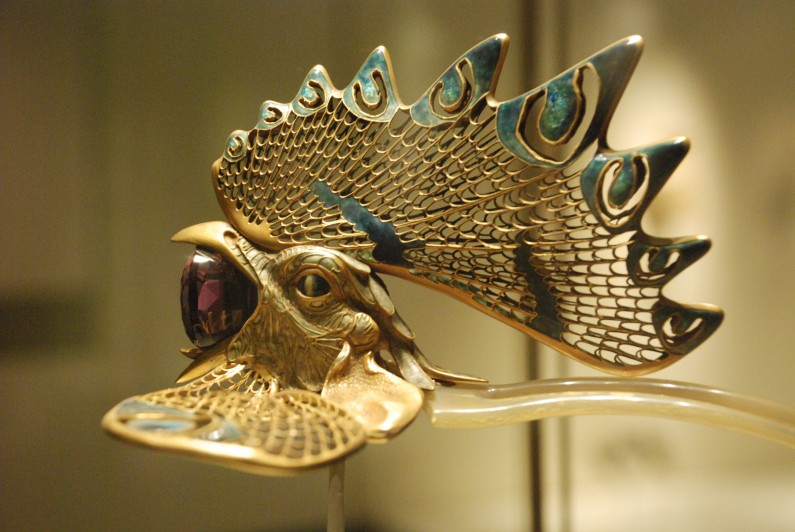
The Calouste Gulbenkian Museum (Portuguese: Museu Calouste Gulbenkian) is a museum in Lisbon, Portugal, containing a collection of ancient, and some modern, art. The museum was founded according to Calouste Gulbenkian‘s last will, in order to accommodate and display Gulbenkian’s art collection belonging now to the Calouste Gulbenkian Foundation.
The permanent exhibition galleries are distributed in chronological and geographical order to create two independent circuits within the overall tour.
The first circuit highlights Greco-Roman art from classical antiquity and art from the ancient Near East including Egyptian, Mesopotamian, Persian and Armenian art as well as Persian art from the Islamic period.
The second circuit covers European art with sections dedicated to the art of the book, sculpture, painting and the decorative arts, particularly 18th century French art and the work of René Lalique. In this circuit, a wide-ranging number of pieces reflect various European artistic trends from the beginning of the 11th century to the mid-20th century.
The section begins with work in ivory and illuminated manuscript books, followed by a selection of 15th, 16th and 17th century sculptures and paintings.
Renaissance art produced in the Netherlands, Flanders, France and Italy is on display in the next room. French 18th century decorative arts have a special place in the museum with outstanding gold and silver objects and furniture, as well as paintings and sculptures. These decorative arts are followed by galleries exhibiting a large group of paintings by the Venetian Francesco Guardi, 18th and 19th century English paintings, and finally a superb collection of jewels and glass by René Lalique, displayed in its own room.
Gulbenkian’s motto was “only the best”, and hence the museum has masterpieces by western European artists such as Domenico Ghirlandaio, Rubens, Rembrandt, Rodin,Carpeaux, Houdon, Renoir, Dierick Bouts, Vittore Carpaccio, Cima da Conegliano, Van Dyck, Corot, Degas, Nattier, George Romney, Stefan Lochner, Maurice-Quentin de La Tour, Édouard Manet, Henri Fantin-Latour, Claude Monet, Jean-François Millet, Sir Edward Burne-Jones, Thomas Gainsborough, Joseph Mallord William Turner, Jean-Honoré Fragonard, Giovanni Battista Moroni, Frans Hals, Ruisdael, Boucher, Largillière, Andrea della Robbia, Pisanello, Jean-Baptiste Pigalle, Antonio Rossellino, André-Charles Boulle, Charles Cressent, Oeben, Riesener,Antoine-Sébastien Durand, Charles Spire, Jean Deforges, François-Thomas Germain.
Some of the works in the collection were bought during the Soviet sale of Hermitage paintings. Of the about 6000 items in the museum’s collections a selection of around 1000 is on permanent exhibition. The museum is located within a landscaped park, at the intersection of Av. de Berna and Av. António Augusto de Aguiar, in Lisbon.
The Calouste Gulbenkian Collection comprises some 6000 pieces. The Museum houses on the permanent exhibition galleries 1000 of its most representative works. A short selection choice of the most outstanding pieces in the Calouste Gulbenkian Museum belonging to different sections.
Mesopotamian Art
Eastern Art
Armeniam Art
Far Eastern Art
Sculpture
Art of The Book
Painting
Decorative Arts
René Lalique
Visitor information:
Address:
Av. de Berna 45A
1067-001 Lisboa Codex
Tel: 21 7823000
Fax: 21 7823032
Transport:
Metro: S. Sebastião or Praça de Espanha stations
Buses: 16, 726, 56, 718, 742
Car Parks (pay):
Avenida de Berna and Avenida Visconde de Valbom
Opening Times:
Tuesday to Sunday: 10 a.m. to 5.45 p.m.
Closed on Mondays, and on the following holidays:
January 1, Easter Sunday, May 1,
and December 25
Access:
Lift, ramps and toilet facilities for visitors with with mobility impairments


Comments are closed.